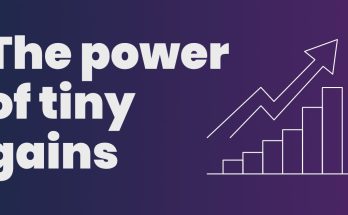Managing remote teams has rapidly transitioned from a niche practice to a mainstream necessity, driven by technological advancements and a global shift in work culture. The success of a distributed workforce hinges not just on trust and communication, but crucially, on the strategic deployment of the right digital tools. These platforms act as the virtual glue that binds team members across different time zones and geographies, ensuring productivity, fostering collaboration, and maintaining a cohesive company culture. Without a well-thought-out toolkit, remote work can quickly devolve into miscommunication, missed deadlines, and a sense of isolation.
### Facilitating Seamless Communication
Effective communication is the cornerstone of any successful team, and in a remote setting, it requires intentional effort and robust digital solutions. **Instant messaging platforms** like Slack or Microsoft Teams serve as the virtual office watercooler and boardroom rolled into one. They allow for real-time discussions, quick queries, and informal chats that mimic in-person interactions, reducing the reliance on slower email exchanges. These tools also enable the creation of dedicated channels for specific projects, departments, or even social topics, ensuring conversations remain organized and easily searchable. They bridge geographical distances, allowing a quick clarification to happen in seconds, preventing hours of potential work being spent on the wrong track.
Beyond instant text, **video conferencing tools** such as Zoom, Google Meet, or Webex are indispensable for fostering deeper connection and clarity. They enable face-to-face meetings, which are crucial for brainstorming, complex discussions, and maintaining a sense of team camaraderie. Seeing facial expressions and body language significantly reduces misinterpretations and helps build rapport among team members who might never meet in person. Regular video calls, whether for daily stand-ups or weekly team meetings, establish a routine and ensure everyone remains aligned with objectives and progress. The ability to share screens, record sessions, and utilize virtual whiteboards further enhances the collaborative experience, making remote meetings almost as effective as their in-person counterparts. [Image of a video conference call]
***
### Streamlining Project Management and Collaboration
Once communication channels are established, the next critical layer of tools focuses on managing projects and ensuring collaborative workflow. **Project management software** like Asana, Trello, or Monday.com provides a centralized hub for tasks, deadlines, and progress tracking. These platforms allow managers to assign tasks, set priorities, monitor individual and team workloads, and visualize the overall project timeline. For a remote team, this transparency is vital; it ensures everyone knows what needs to be done, who is responsible, and the current status of each deliverable, minimizing confusion and accountability gaps.
Complementing project management are **cloud-based document collaboration tools** such as Google Workspace (Docs, Sheets, Slides) or Microsoft 365. These applications allow multiple team members to work on the same document simultaneously, seeing real-time edits and leaving comments. This eliminates the cumbersome process of exchanging multiple document versions via email, which often leads to confusion and lost work. For creative teams, specialized tools like Figma or Miro offer collaborative whiteboarding and design capabilities, allowing designers and non-designers alike to brainstorm visually and iterate on concepts in a shared virtual space. The ability to collaborate on documents and creative assets in real-time is paramount for maintaining momentum and efficiency in a distributed environment.
***
### Enhancing Productivity and Accountability
Even with clear communication and project frameworks, remote teams need tools that support individual productivity and provide insights into overall team performance. **Time tracking software** can be valuable for projects billed hourly or for understanding where time is being spent, although its implementation should always be balanced with trust and a focus on outcomes rather than micromanagement. Tools like Toggl Track or Clockify offer simple interfaces for employees to log their hours against specific tasks or projects, providing managers with data that can inform resource allocation and project forecasting.
For managing sensitive information and ensuring secure access, **password managers** like LastPass or 1Password are essential. They allow teams to securely share login credentials for various business accounts without compromising security, a crucial aspect when team members are accessing resources from diverse locations and networks. Furthermore, **knowledge management systems** or internal wikis, such as Confluence or Notion, serve as centralized repositories for company policies, onboarding guides, best practices, and frequently asked questions. This empowers remote employees to find answers independently, reducing interruptions and fostering a culture of self-sufficiency. A well-maintained knowledge base is particularly valuable for onboarding new remote hires, providing them with immediate access to critical information.
In conclusion, successfully managing remote teams in the modern era relies heavily on a thoughtful integration of digital tools that address communication, collaboration, productivity, and security. From instant messaging and video conferencing that foster connection, to project management and document collaboration platforms that streamline workflows, and finally to productivity and knowledge-sharing tools that empower individual work, each component plays a vital role. The right combination of these technologies not only enables a distributed workforce to function efficiently but also helps cultivate a cohesive, engaged, and high-performing team, proving that physical proximity is no longer a prerequisite for collective success.




